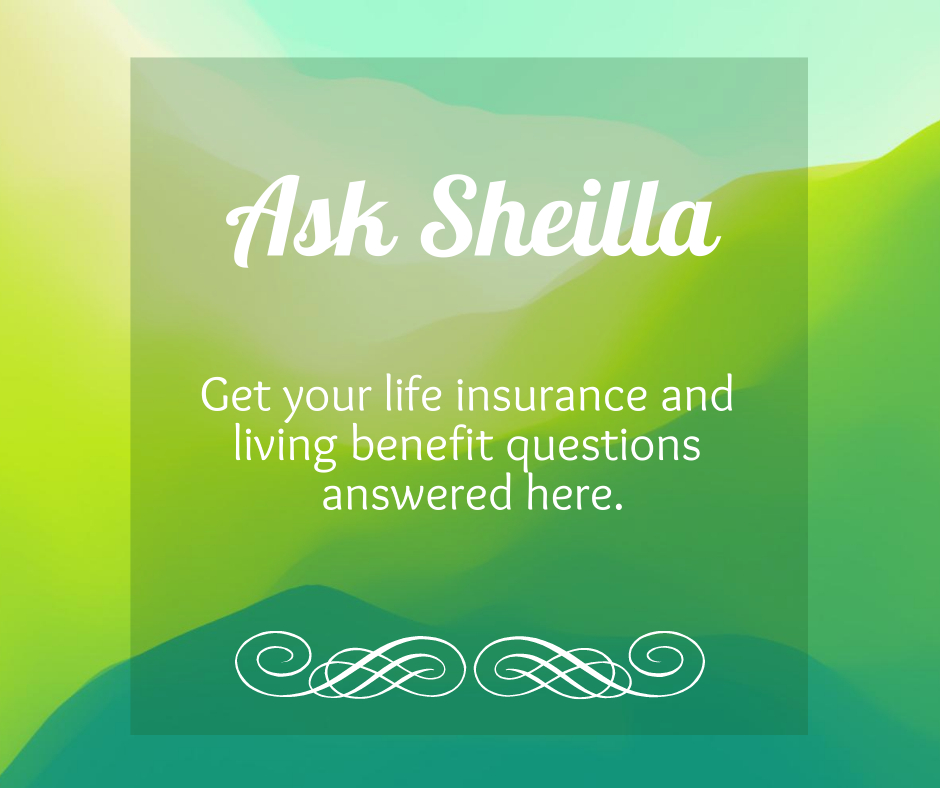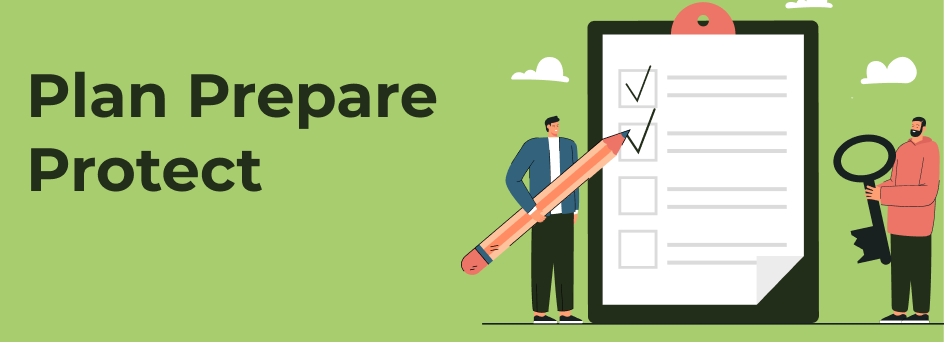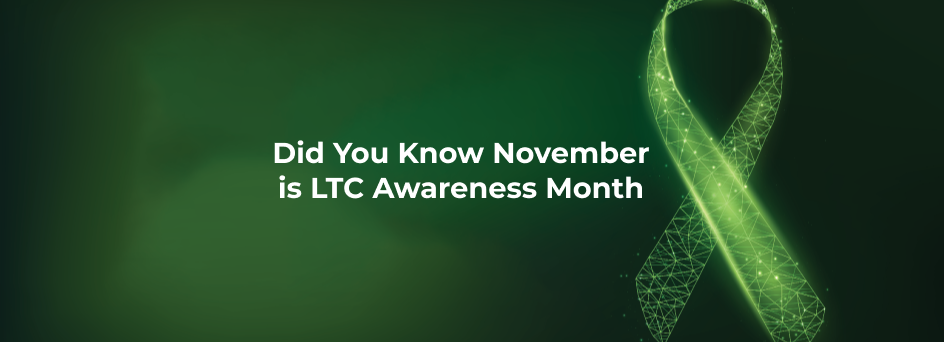Disability Insurance Awareness Month (DIAM): Plan. Prepare. Protect
One thing that is important is having an income and protecting our ability to create it.
Plan. Prepare. Protect is the theme of DIAM, Disability Insurance Awareness Month this May. Read on about why this matters.

What You Need To Know About Disability
Imagine driving your car one night and then waking up in a hospital a few days later, remembering very little of what happened in that accident when a drunk driver hit you head-on. It left you with several broken ribs, a broken back, a broken leg, a lacerated spleen and traumatic brain injury. After two weeks in ICU, and a month of inpatient therapy to relearn how to walk and use your hand, you were able to go home. You still had more months of outpatient therapy to go.
You’re unable to work, you can’t even describe how difficult it is to do simple tasks like buttoning a shirt, let alone using the toilet, taking a shower, or walking a short distance without shooting pain down your legs.
Bills do not stop when you are disabled and cannot work.
You quickly exhaust your savings, undermining your family’s financial security. The money you’ve managed to put away for a vacation, the kids’ education, and your own retirement now have to be spent on gas, groceries, and other necessities. The worry is suffocating. The stress and sleepless nights are unbearable.
Worse, you don’t know how long it will last. Long-term disability lasts 31.2 months, on average, so the long-term financial impact can be devastating. Over half of all personal bankruptcies and mortgage foreclosures are a consequence of disability, according to a 2005 Harvard study.
“Disability strikes like a bolt from the blue: unwanted, unexpected, unwelcome. Unfortunately, many of us are totally unprepared for the financial hit that disability can bring.” CDA
According to a study done by the CDA, Council for Disability Awareness, 95% of disabling accidents and illnesses are not work-related so Worker’s Compensation does not cover them. The most common long-term disabilities are from illnesses like lupus, arthritis, cancer, heart attack, stroke and other neurological disorders like ALS, Parkinson’s, Multiple Sclerosis and mental health disorders. As a physical therapist, I know what it’s like for a family to suffer when one of their loved ones gets any of these.
Most Americans live paycheck to paycheck. There’s little or no money left for unexpected emergencies like an injury or illness – the primary causes of disability. What all these potentially debilitating conditions have in common though, is whether, by illness or injury, the disability can become a long-term event requiring income protection. So, while we can’t predict the unexpected, we can better prepare for it.
Your Odds of Dying versus Becoming Disabled During Your Working Years:
Death: 8% Risk
Disability: 25% Risk
Your Biggest Asset
Someone once told me that my biggest asset is my ability to create an income. Before I could argue, thinking of the patients I’ve helped in their Physical Therapy who lost that ability, had me agreeing 100%. That is why I’m so passionate about income protection and products like disability insurance that help you protect what’s one of your greatest assets – your income.
You may think it will never happen to you, especially while you are young. My 20-plus years of experience as a physical therapist says otherwise. The Social Security Administration did a study that found that one in four 20-year-olds will become disabled before retirement age. Chances are, if you live long enough, you will most likely experience a disability in your lifetime.
The average disability payment from the government is $1145 a month.
Could you live on that if something were to happen?
A typical vacation lasts 2 weeks why? Because the average person can’t go without income for longer than that. So why then go months without any income, when disability insurance or some type of insurance can help you?
That’s why disability insurance is so important. It provides a portion of your income if you’re unable to work. In fact, you can also call it income insurance.
The Value of A Stay-At-Home Parent
Many do not think a nonworking spouse needs insurance. But according to Salary.com, “if you paid a stay-at-home parent for everything they do, their median annual salary — taking into consideration all the services they provide — would be an astounding $178,201!”
The stay-at-home spouse makes a significant contribution to the household. Even though they are not being paid for their “work”, if they become ill or disabled, the breadwinner can suffer both professionally and financially. And, of course, the family will suffer.
Disability Insurance Awareness Month (DIAM)
According to CDA, millions of working Americans are facing a growing crisis: a lack of adequate disability insurance coverage. While 61% worry about the financial impact of a disability, only 30% actually own disability insurance. Today, the absence of emergency savings, rising medical costs, and an overall trend of fewer employers offering benefits to workers have created a critical blind spot for many American workers and their families. Without some kind of income protection, more Americans are experiencing severe financial difficulty if they need to miss work due to illness, injury or pregnancy.
Every year in May the CDA joins forces with others in the insurance industry to raise awareness about the importance of income protection.
What You Can Do: Take Time to Evaluate Your Disability Insurance Needs During DIAM
1. Find out what your employer offers in terms of disability insurance. Learn how much it will pay monthly during a disability and compare that with your monthly expenses.
2. Buy additional coverage either through your employer or on your own if needed. Your insurance agent or financial advisor can assist you.
3. Talk to me about other types of insurance that can help during a disability like life insurance with living benefits that can address both your life insurance and disability needs with one affordable premium.
Follow me on Instagram and Facebook, to be in the know of all things planning right to take care of the people you love.
I’m growing my team! Do you know a coachable, motivated, ambitious woman who wants to own their time doing what we do? Share this and contact me for more details.

What Dignity Planning Means:
I help you plan to ensure you live in dignity throughout your life until your last breath.
Living in dignity means
- Being able to focus on getting better because money is not an issue
- Being able to live comfortably and pay your mortgage even if you’re sick and can’t work
- Being able to take care of your sick family member because you can afford not to work
- Being able to afford the best care even when not covered by health insurance
- Living a quality of life until your last days
- Continuing to take care of the people who matter most even after you’re gone or no longer can work

Ask Sheilla
Q: What is the difference between your living benefits policies and Aflac?
A: Aflac is a leading provider of supplemental coverage. They’re offered separately from major medical coverage and are not an integral part of an individual’s health plan. It helps with expenses that health insurance doesn’t cover and they pay the insured directly. Most but not all of Aflac’s insurance for cancer, critical illness, and hospital are indemnity insurance policies, meaning they pay you up to a certain limit for each expense that you incur for your illness. For example, Aflac’s indemnity plan pays a max of $300 per day for radiation and chemotherapy, and $300 per day for hospital stays, according to an online source. The limits may be lower for other expenses like lodging, and transportation. Some policies pay a lump sum up to $20,000. The limits may vary depending on your specific diagnosis. These are not by any means to be taken as facts, as I am not an Aflac agent.
In contrast to our life insurance with living benefits, first of all, it is life insurance with a death benefit. The living benefits are for critical (such as cancer, stroke, heart attack), chronic or terminal illness. You tell the company how much of your death benefit you want to claim for your illness, and the insurance company will offer to give you a percentage based on the severity of your illness. We do not collect receipts from you. The only thing needed to file a claim is a medical certification from your doctor and medical records showing the diagnosis. You get to decide where you want to spend the money once you receive it. It can be used to pay off an entire mortgage!
Depending on what your preference is, either option can be beneficial. If you want the set amount up to a limit, Aflac is a good choice. You will have to submit proof of expenses. If you prefer a lump sum vs smaller payouts and higher limits available to you without needing to send receipts, then life insurance with living benefits is your best bet.
If you have an Aflac plan or similar type of coverage and want to know the difference in premiums compared to ours, contact me.

As a special Mother’s Day treat for moms out there,
I put together the following list of products and services that can make you feel good:
- Body By Keke Beautiful Handcrafted Natural Bath and Body Products. Get 15% off at checkout! Use code MAY2022
- Sublime Sunless Tanning and Skincare
- Blanca’s Bling
- Arbonne Health Products
Wishing you a Happy Mother’s Day!
One more thing…
A quick shout-out to my Asian, Hawaiian, Chamorro, and Pacific Islander friends and family in honor of Asian American and Pacific Islander Heritage Month. From migrant laborers to inventive trailblazers, May is a time to acknowledge their hardships, culture, achievements, and beliefs.
Sheilla Vidal is a Retirement Income Certified Professional RICP® and life insurance broker. Sheilla is also a physical therapist, wife, mother of two, and one of the caregivers for her 85-year-old father. She is an avid learner. She writes, speaks, and recognizes that her work in helping clients live with dignity is her God-given mission.



